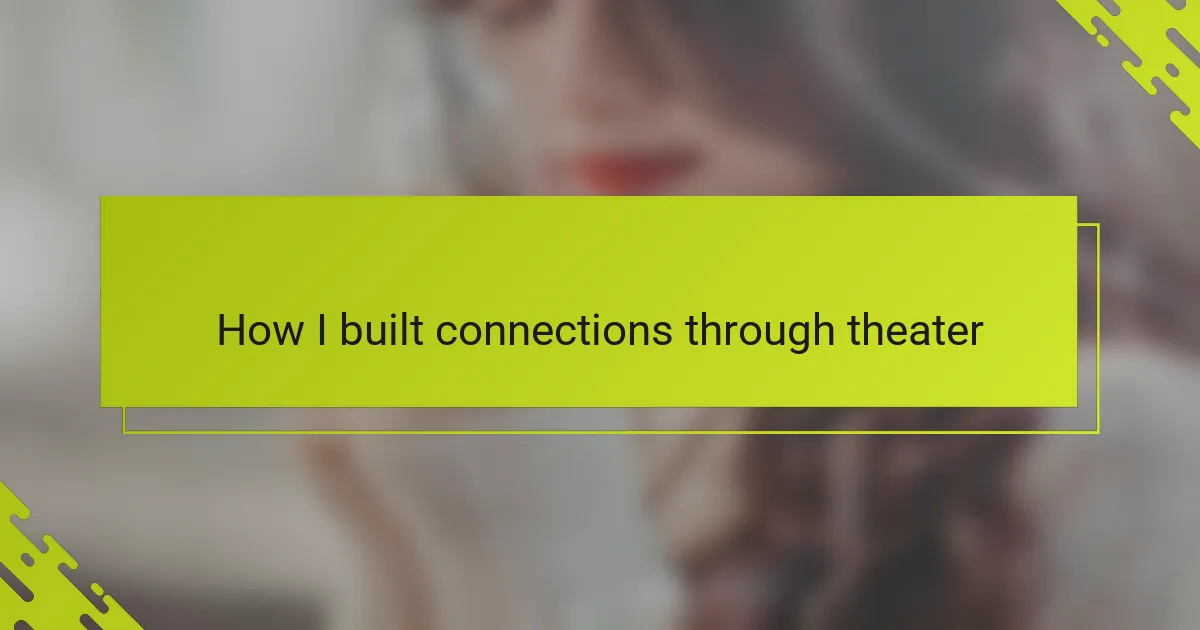Key takeaways
- Queer women culture fosters community, resilience, and a redefinition of family through shared experiences and vulnerability.
- Theater serves as a powerful medium for connection, allowing individuals to explore identity and form deep bonds through storytelling.
- Building relationships in theater involves intentional vulnerability, curiosity about peers, and consistent participation in activities.
- Sustaining friendships requires ongoing communication, emotional processing, and celebration of each other’s growth beyond the stage.

Understanding Queer Women Culture
Queer women culture is a rich tapestry woven from diverse identities, stories, and experiences that defy easy definitions. I’ve found that understanding this culture means embracing its fluidity and the way it challenges conventional narratives about gender and love. Have you ever noticed how every conversation, every gathering feels like an intimate exchange of truths that often remain unspoken elsewhere?
For me, the heart of queer women culture lies in its sense of community and resilience. It’s not just about shared attractions or labels, but about creating spaces where vulnerability is met with acceptance, and where connection becomes an act of resistance. I’ve often been moved by how the culture nurtures a collective strength that feels both tender and powerful.
What strikes me most is how queer women culture encourages us to rewrite what family and support look like. It’s like being invited into a living story where each voice matters and where authenticity is the currency. Isn’t it incredible how these cultural bonds can transform our sense of belonging and self?
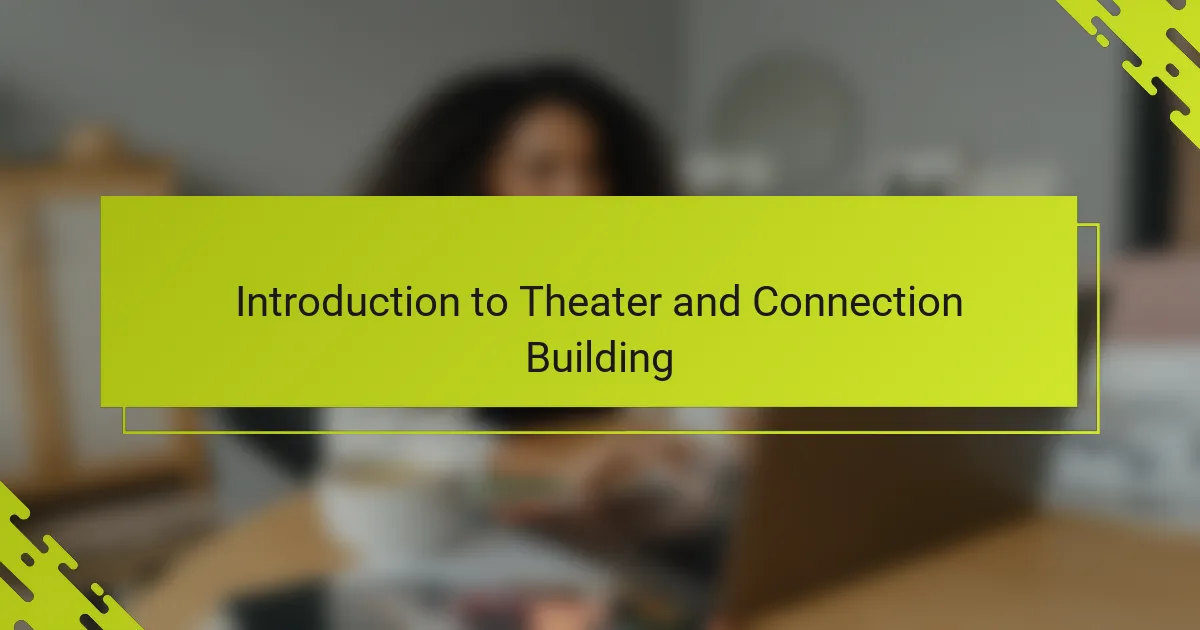
Introduction to Theater and Connection Building
Theater has always felt like a vibrant space where connection comes alive beyond words. When I first stepped onto a stage, I sensed how storytelling could dissolve barriers and invite a shared vulnerability. Have you ever noticed how, in theater, strangers become a temporary family bonded through emotion and trust?
What fascinates me is how theater mirrors the complexity of human experience, allowing us to explore identity, relationships, and community in a deeply personal way. I remember a moment during a rehearsal when a simple gesture sparked a wave of understanding among us—something that no scripted line could capture. That instant showed me how theater doesn’t just tell stories; it builds bridges between hearts.
For queer women especially, theater offers a unique haven to express what often goes unspoken. It creates a space where authenticity is celebrated and connection is more than just physical presence. Isn’t it powerful how shared creative expression can become a radical act of belonging and healing?
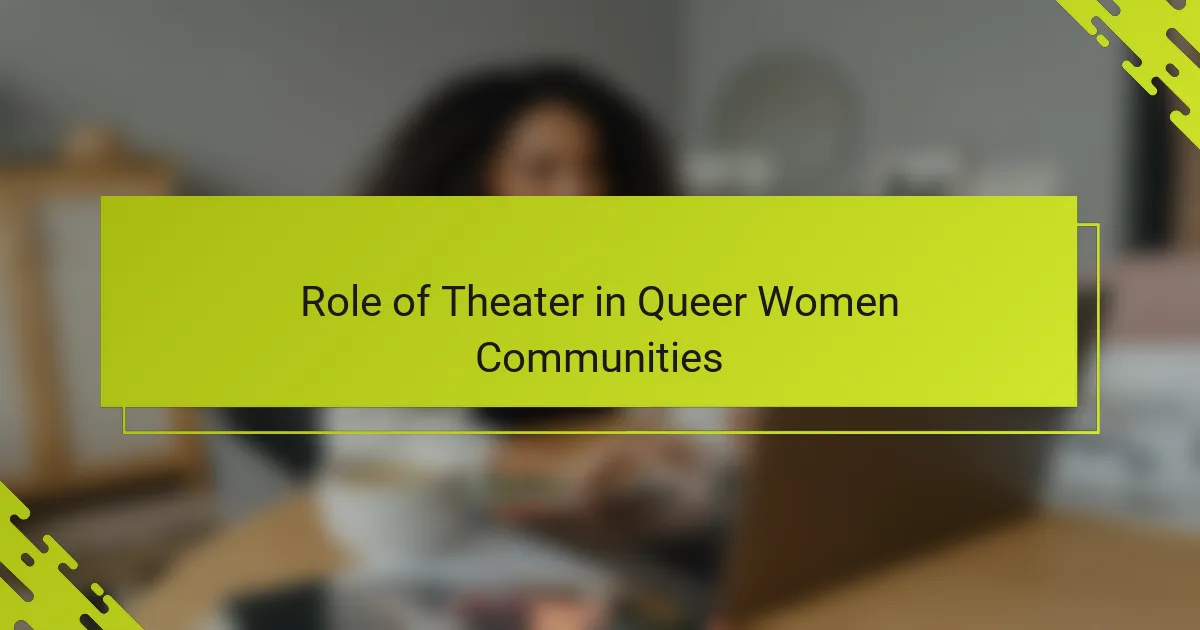
Role of Theater in Queer Women Communities
Theater in queer women communities feels like a living pulse, a space where stories that often get silenced find their stage. I’ve seen firsthand how performances become more than art—they become acts of visibility and validation. Have you ever watched a scene unfold and felt your own experience reflected so clearly that it was like a quiet nod saying, “You’re seen here”?
What I find most striking is how theater fosters deep connections beyond just the roles we play. During one project, I noticed how rehearsals became a place where trust blossomed, and friendships formed in the cracks between lines. It’s in these moments that theater transcends performance—it becomes a shared journey of healing and identity.
For many queer women, theater acts as both a mirror and a map. It reflects our complexities while guiding us toward communities that understand and celebrate those intricacies. Isn’t it remarkable how, through creating and witnessing stories, we carve out spaces where belonging isn’t just desired—it’s demanded?
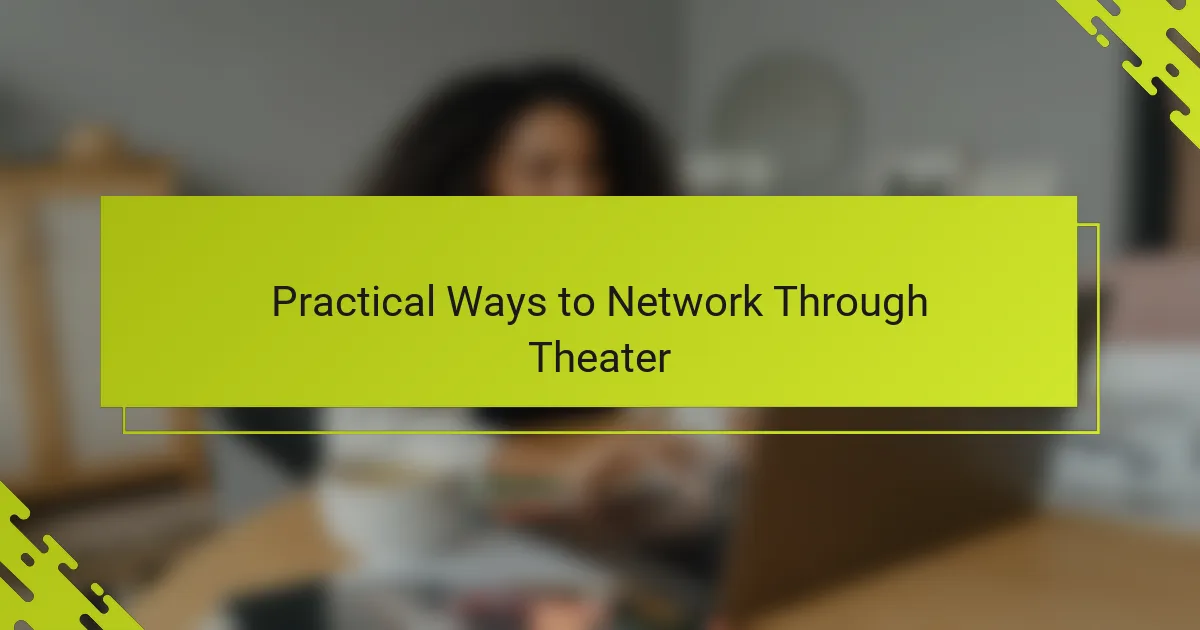
Practical Ways to Network Through Theater
One of the most practical ways I’ve built connections through theater is by showing up consistently for rehearsals and workshops. It’s in those in-between moments—chatting over coffee, sharing nerves before a scene—that relationships naturally form. Have you ever noticed how the informal downtime often leads to the deepest conversations?
Another approach that worked for me was volunteering behind the scenes. Whether it was helping with set design or ushering, these roles allowed me to meet people from all walks of theater life. It felt like an invitation to be part of the community even before stepping on stage, creating a foundation of trust and shared experience.
I also made it a habit to attend post-show gatherings and talkbacks, where audiences, actors, and creators mingle freely. These events became spaces where I could engage in meaningful dialogue about the themes, identities, and realities portrayed. Isn’t it amazing how discussing a performance can open doors to friendships rooted in mutual understanding?
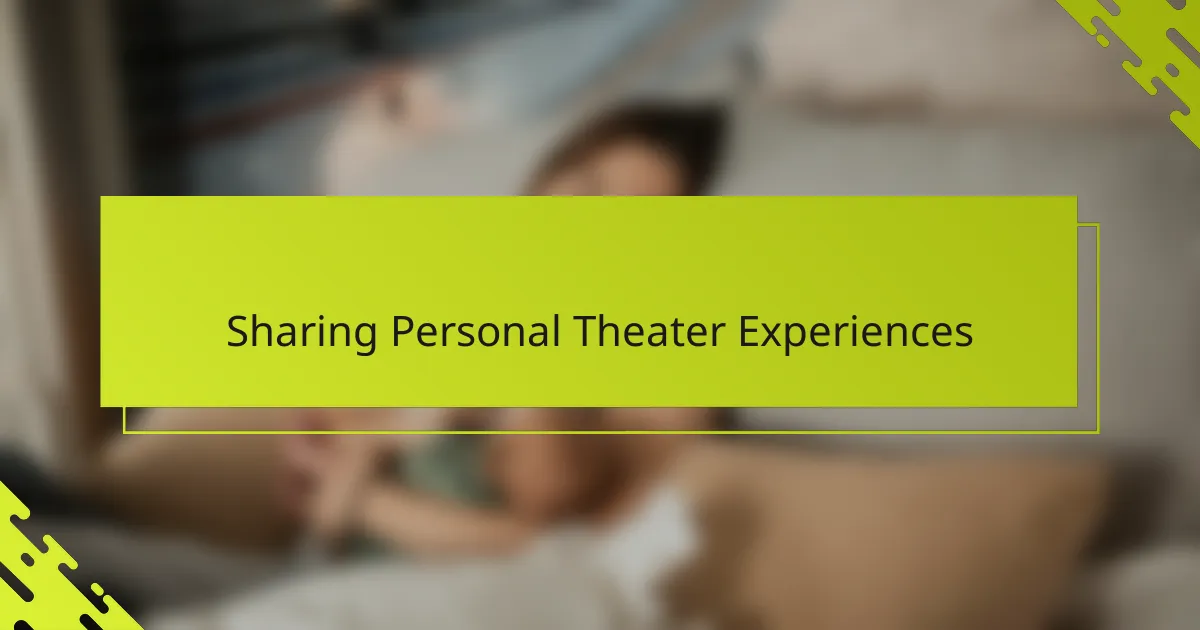
Sharing Personal Theater Experiences
There’s something profoundly intimate about sharing personal theater experiences with others—it turns fleeting moments on stage into lasting connections off it. I remember after a performance, a fellow actor and I stayed backstage, exchanging stories about what a particular scene meant to us personally. That conversation peeled back layers I hadn’t even realized were there.
At times, hearing someone else’s vulnerable admission during rehearsal felt like an unspoken permission to reveal parts of myself I usually kept hidden. Have you ever found that by simply opening up about your emotions in a creative space, others follow suit, and suddenly the room feels charged with an honest kind of closeness?
These shared experiences in theater become more than memories; they become threads in a larger tapestry of trust and understanding. It’s in these moments I’ve learned that connection isn’t just about being seen—it’s about being seen fully, flaws and all.
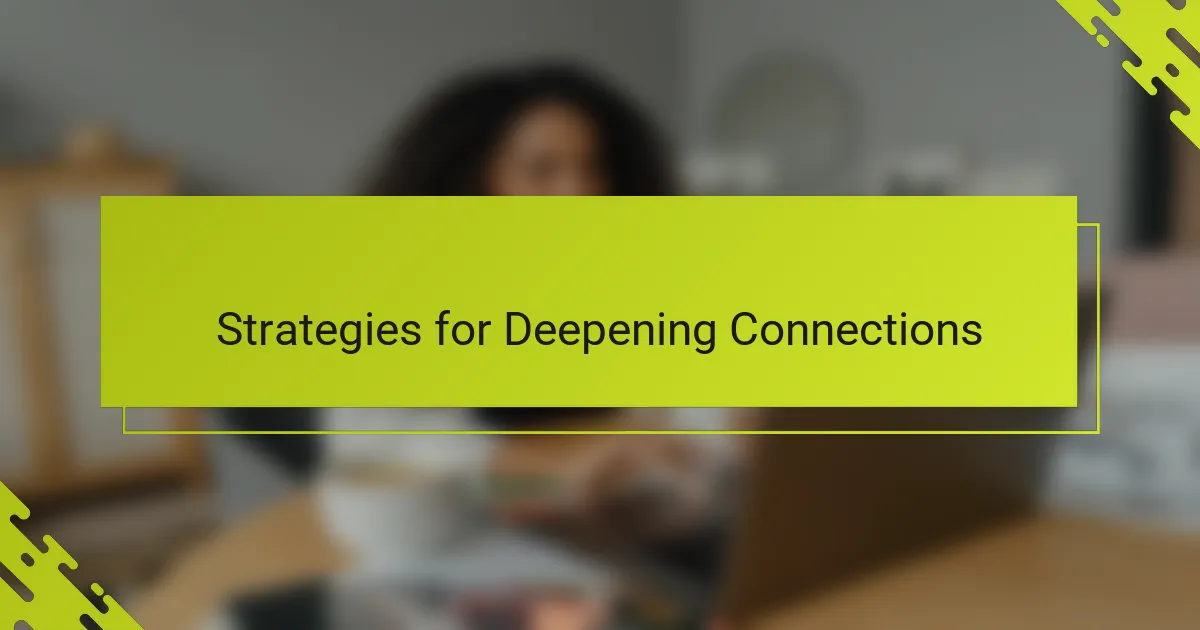
Strategies for Deepening Connections
One strategy I’ve found invaluable is embracing intentional vulnerability during rehearsals and performances. When I allowed myself to share not just my lines but my feelings, I noticed others did the same, creating a space where connections deepened naturally. Isn’t it remarkable how showing up as your whole self invites others to do the same?
Another approach that helped me was nurturing curiosity about my theater peers beyond the stage. Asking open-ended questions about their experiences and perspectives led to conversations that felt rich and authentic—far beyond small talk. I often wonder, how often do we miss these moments simply because we don’t slow down enough to listen deeply?
Finally, I learned that consistency builds trust. By showing up repeatedly and participating in various theater-related activities, I became a familiar presence, which made opening up easier for everyone involved. From my experience, connection isn’t a one-time spark; it’s a steady flame kindled by shared time and genuine interest.
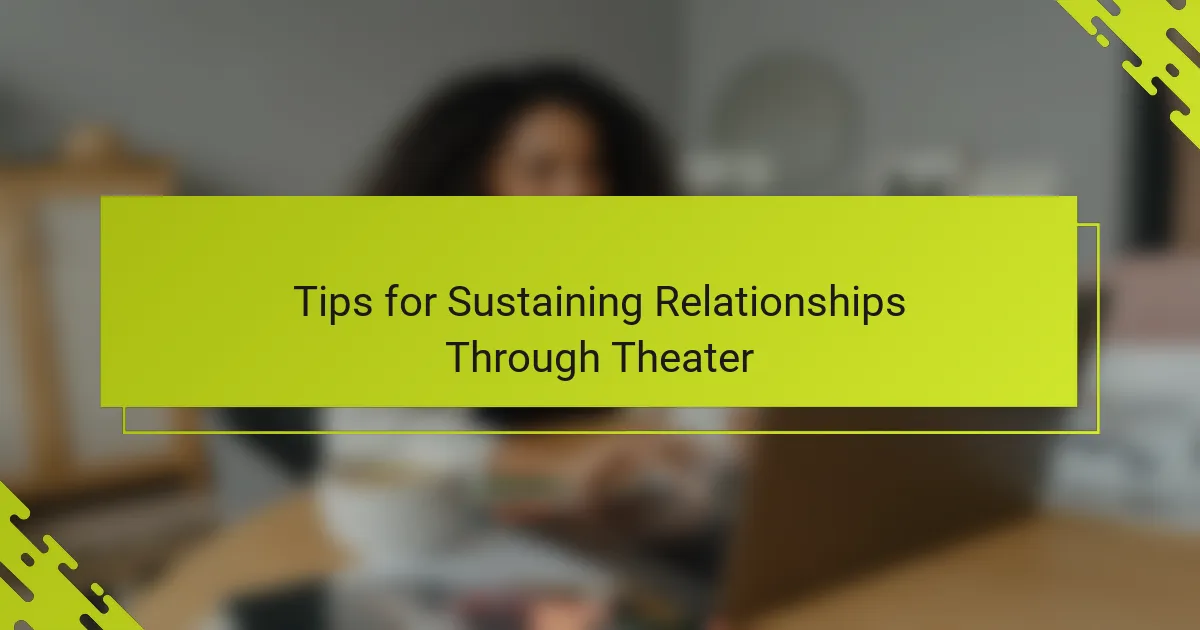
Tips for Sustaining Relationships Through Theater
Maintaining relationships forged through theater takes more than just showing up—it requires ongoing care and attention. I’ve noticed that checking in with fellow performers between projects, even with a quick message or casual meet-up, helps keep that connection alive. Have you ever felt how a simple “How are you?” can be the thread that holds a creative friendship together?
It’s also important to honor the emotional intensity that theater work often stirs up. After a particularly challenging rehearsal, I found that carving out time to process feelings with a trusted collaborator made our bond stronger and our trust deeper. When we acknowledge our shared vulnerabilities, don’t we create a safer, more enduring space for connection?
Lastly, I believe sustaining these relationships means celebrating each other’s growth—on and off the stage. Whether it’s applauding a new project or supporting life changes, those moments of mutual encouragement become the glue that binds us. Isn’t it remarkable how theater relationships, rooted in both creativity and care, can enrich our lives far beyond the spotlight?
